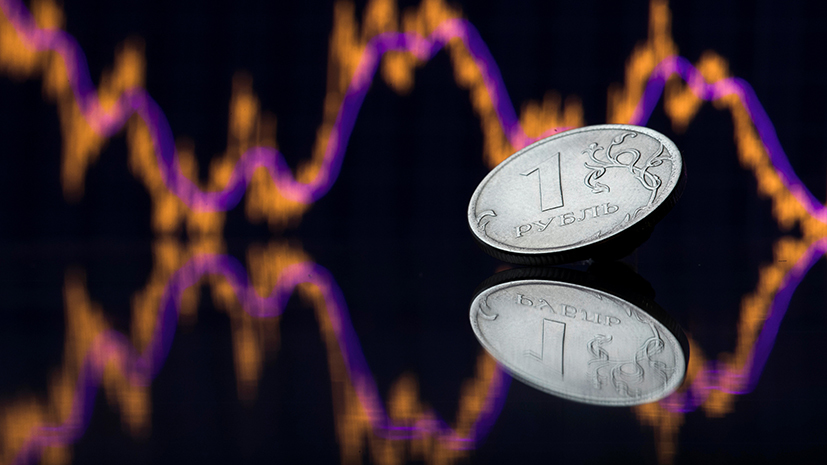On Friday, April 24, the Board of Directors of the Bank of Russia decided to reduce the key rate by 0.5 percentage points to 5.5% per annum. The value has become the lowest since February 2014.
The regulator made its decision on the basis of a revised assessment of the development of the economy and the dynamics of inflation for the next three years. This was during a press conference, said the head of the Central Bank Elvira Nabiullina.
“Since the last board of directors at the rate, there have been three events that have determined our view of the situation. All of them are mainly associated with the spread of the coronavirus pandemic. Firstly, this is a significant recession in the global economy. Secondly, this is another round of a significant drop in oil prices, despite the new OPEC + deal. Thirdly, this is the introduction of restrictive measures in Russia, ”explained Nabiullina.
According to the Bank of Russia, in 2020 inflation will be 3.8-4.8% and will be near the 4% target in the future. Moreover, according to the forecast of the regulator, in 2020, Russia's GDP may decline by 4-6%, after which it will begin to recover and will grow by 3-5% in 2021, and by 1.5-3.5 in 2022 %
“We believe that the main decline in GDP, the main blow will be in the II quarter (2020. - RT ). Our current estimates - in the second quarter, GDP may drop to 8%. But then a gradual economic recovery will begin, ”Nabiullina added.
As explained by RT chief analyst of TeleTrade Mark Goikhman, in the current conditions, lower rates are necessary to stimulate business activity in the country and maintain the economy as a whole.
“The actions of the Central Bank should lead to an increase in investment, production, consumer demand due to cheaper loans. The effect will be transmitted to the entire financial system. This will facilitate access to financing for the business, increase its profitability. For the population, this means some easing of the credit burden, which will slow down the decline in real incomes, ”said Goikhman.
Recall, the last change in the key rate of the Central Bank occurred in February. Then the regulator lowered it from 6.25 to 6% per annum and explained this decision by a sharp slowdown in inflation.
At a meeting in March, the Bank of Russia decided to pause and maintain interest rates amid increased inflation risks due to the influence of coronavirus, falling oil prices and the weakening ruble.
The next meeting of the Board of Directors of the Central Bank is scheduled for June 19. At the same time, it is expected that already during the first summer meeting the top management of the regulator may again reduce the rate.
“If the situation develops in accordance with the basic forecast, the Bank of Russia admits the possibility of further reduction of the key rate at the next meetings. The Bank of Russia will make decisions at a key rate taking into account the actual and expected dynamics of inflation with respect to the target, the development of the economy on the forecast horizon, as well as assessing risks from internal and external conditions and the reaction of financial markets to them, ”the Central Bank said.
According to Elvira Nabiullina, in the future the Central Bank sees opportunities to reduce rates to 4.5% per annum.
Currency response
Experts interviewed by RT assessed the likelihood of a decrease in the Central Bank's key rate to 5.5% per annum as high. So, investors in their actions took into account the decision of the Bank of Russia in advance. At the same time, the regulator’s statements about the possibility of another decrease at the next meetings were positively received by the market. This was in an interview with RT, a leading analyst at QBF Oleg Bogdanov.
After the results of the meeting of the Board of Directors of the Central Bank were announced, the Russian currency began to strengthen on the Moscow Exchange. The US dollar depreciated by 1%, to 74 rubles, and the euro - by 0.8%, to 79.9 rubles.
The official exchange rate of the Central Bank on April 25 was set at 74.72 rubles per dollar and 80.25 rubles per euro.
According to analysts, the regulator’s policy primarily affects the Russian government securities market. Reducing the Central Bank rate over time reduces the yield of federal loan bonds (OFZ), so investors are trying to pre-purchase securities at a bargain price. At the same time, the rush of money flow into Russian OFZs may support the national currency.
“A hint of the Bank of Russia on a further rate cut supports the ruble, as such a decision will increase the attractiveness of Russian assets, shares and bonds,” added Oleg Bogdanov.
- Reuters
- © Maxim Shemetov
According to Mark Goikhman, the further dynamics of the national currency will largely depend on the general situation with the pandemic and fluctuations in oil prices. According to the analyst, in the near future the dollar may remain in a wide range of 73-78 rubles.
At the same time, proactive sales by the Central Bank of foreign currency in the domestic market as part of the budget rule mechanism still play in favor of the ruble. The Central Bank began to carry out the corresponding operations on March 10. According to Elvira Nabiullina, over the past time, total foreign currency sales amounted to $ 5.5 billion. By its actions, the regulator increases demand for rubles and thereby supports the Russian currency.
Against this background, according to Oleg Bogdanov, the national currency can continue to gradually strengthen until the end of spring. Thus, the analyst highly appreciates the likelihood of a dollar depreciation by early summer to 72-73 rubles, and the euro exchange rate to 78 rubles.

